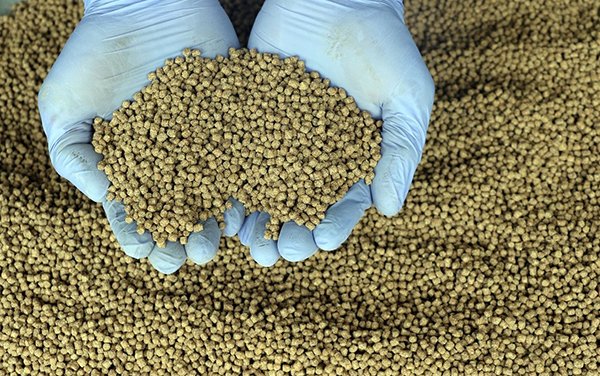The South East Asian Fisheries Development Center, SEAFDEC/AQD has been working on nutritional requirements, alternative feed ingredients and their digestibility over the past few years. The center has developed suitable feed formulations for a wide range of aquaculture species at different growth stages.
AQD has been testing agro-industrial wastes and by-products (mango peel silage, soybean curd residues, citrus by-products) and its suitability as protein source for tilapia broodstock and fingerlings. Protein-enhanced copra meal was also analyzed and tested as protein source for grouper (Epinephelus coioides). For the abalone (Haliotis asinina) broodstock diet, the algae Thraustochytrid was tested to enhance its lipid content. A hydrolysate of milkfish by-products with high protein content, was also evaluated as a potential feed ingredient for pompano (Trachinotus blochii) and tilapia diets.
Promising results were also obtained from distillers dried grain solubles (DDGS), a by-product of the distillery industry, which was shown to significantly improve milkfish growth. A dried form of the seaweed Ulva pertusa, when enriched with ammonium chloride increased the level of protein-nitrogen which can be a good source of protein for abalone.
This year, preliminary data on the comparative performance between a commercial diet and a low-cost grow-out diet formulated by AQD has resulted in similar harvest weight in milkfish. While providing similar growth performance, the low-cost diet presented 29% savings in feed cost. Future research include cheaper and sustainable feed for milkfish and tilapia and ingredient components such as DDGS, poultry by-product meal and PECM (protein enhanced copra meal).
The Philippine center has identified many alternative feed ingredients, however, their successful incorporation in feeds will still depend on multiple factors such as their unique nutritional values, feed preference of the target species and the ingredient’s digestibility, as well as the availability and cost of the ingredient.
The SEAFDEC/AQD launched a regional database of alternative feed ingredients to serve as a reference on the different feed ingredients that, depending on cost and availability, may be used to produce cheaper feed. The database currently lists over 70 different feed ingredients along with their nutritional composition and optimal inclusion levels. Results of feeding trials on fish species are also included where available. The data has been collected from over 100 published scientific papers on fish nutrient substitutes which were found effective for commercial applications.
More alternative feed ingredients will soon be added to the database as representatives from SEAFDEC member countries have also been tasked to contribute information regarding their respective local ingredients. The database is a collaborative effort between SEAFDEC/AQD and SEAFDEC member countries through their representatives with funding support from the Government of Japan-Trust Fund.
Check the database here.











